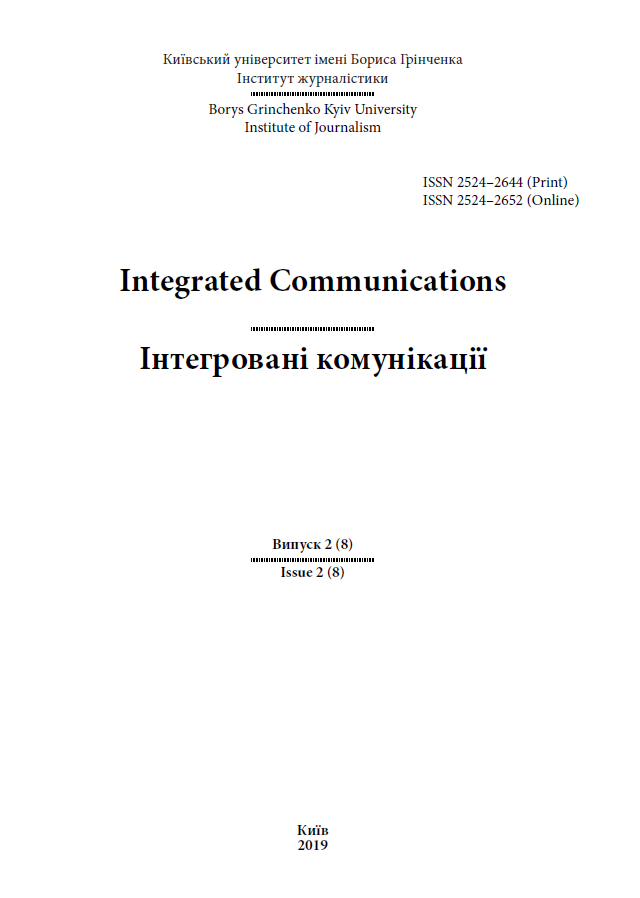EPISTOLARY COMMUNICATION: SEMIOTIC DIMENSION
Abstract
The article presents an original approach to the analysis of epistolary communication of the Ukrainian intelligentsia of the late XIX - early XX centuries from the standpoint of semiotic definitions. It means letters appear as a specific semiotic formation. Epistols were considered as signs, carriers of information, communication was outlined as the variety of ideas, motives, themes characterized by the inner story. Decoding the leading communicative codes of epistolary communication was made. The researched letters show moral, philosophical, socio-cultural, civil and personal features. The purpose of the scientific research is to determine the specifics of epistolary communication from the standpoint of the semiotic approach. The tasks of scientific intelligence are: to outline the state of scientific problem’s development; to investigate the epistols of the intelligentsia from the standpoint of semiotics; to determine the main codes in the communication of character figures; to consider epistols as a polyphonic sign system; to synthesize the results of the research in conclusions.
A set of general scientific and special research methods was applied to achieve the purpose and tasks. Source research and analysis of professional researches were used to determine the current state of the identified problems’ development. The principles of historicism, scientific objectivity and systematisms allowed us to analyse the peculiarities of epistolary communication of the late XIX - early XX centuries. The semiotic method was used to decode epistol, analysis, synthesis, generalization in decoding letters and in conclusions.
Therefore, the main tasks of the epistolary communication of the intelligentsia of the late XIX - early XX centuries were the intellectual own perception of the European modernity values, the creativity and socio-cultural experience of the talented representatives of the intellectual elite. The semiotic significance of words and sentences demonstrates the process of popularizing the concept of iconic universalism.
Downloads
References
Kvit, S. (2008), “Mass Communications: a Textbook”, Vyd. dim “Kyjevo-Moghyljansjka akademija”, Kyiv, p. 10.
McQuail, D. (2010), “Mass communication theory”, translated by Olia Vozna, Halyna Stashkiv, Litopys, Lviv, p. 18-19
Cooley, Ch. (1994), “Texts on the history of sociology of the XIX-XX centuries: chrestomathy”, compiled by V. Y. Dobrenkov, L. P. Belenkova, Nauka, Moscow, p. 350-357
Grinchenko, B., “Letters from Ukraine of the Dnieper. Letters of the XII-XVIII centuries”, available at: http://litopys.org.ua/drag/drag 206.htm (accessed 02 December 2019)
IR NBUV, f. 40927, 1-4 p.
IR NBUV, f. 40997, 1 p.
IR NBUV, f. 41039, 1 p.
IR NBUV, f. 41226, 1 p.
IR NBUV, f. 41226б p.
IR NBUV, f. f. 41226, p.
IR NBUV, f. III, 32464, 2 p.




